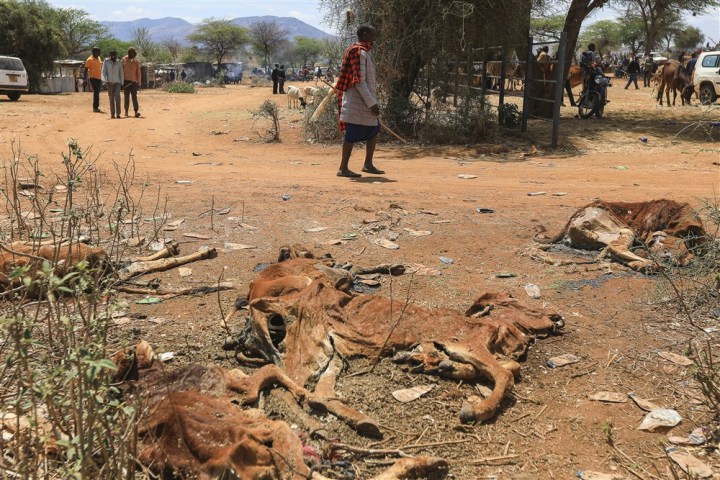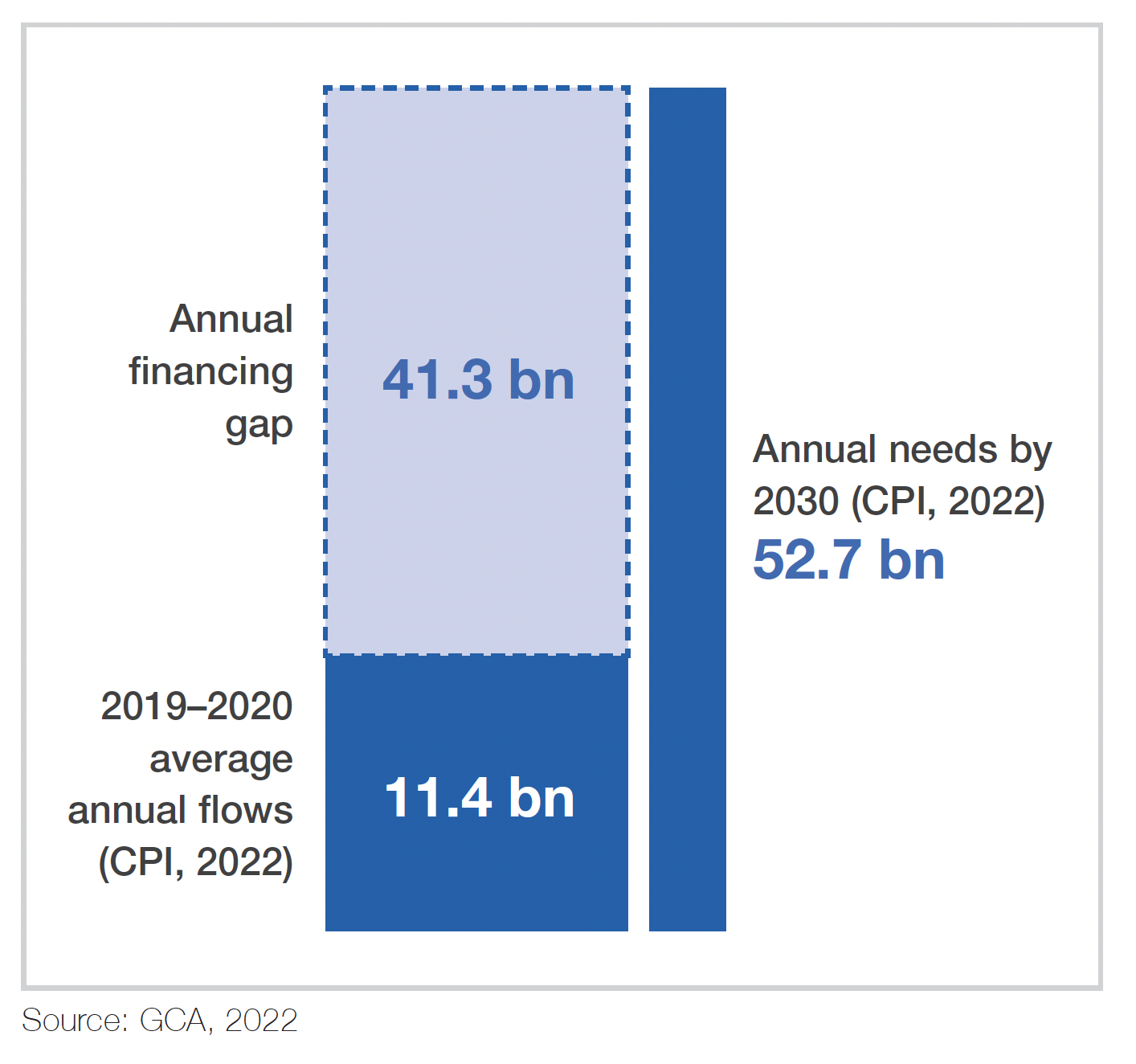ISS TODAY OP-ED
Development funders need to look to projects that explicitly address climate mobility in Africa.

Although funds for climate adaptation are rising, vital climate-linked mobility interventions are still being overlooked.
Despite contributing only 3% of historical carbon emissions, climate-related disasters cost Africa up to $15-billion annually. The continent loses between 5% and 15% of gross domestic product per capita growth to climate change. More than 54 million people in Africa experienced climate disasters between January 2021 and September 2022.
Wealthy countries continue to miss the target of $100-billion in climate funding promised at the 15th Conference of the Parties in 2009. The deadline for the funds was 2020.
A new Institute for Security Studies policy brief identifies some key barriers preventing more climate-linked mobility funding and action. These include a lack of institutional knowledge within development organisations and governments, and of appropriate laws and policies on the issue. Financial instruments are unsuitable, and there’s a lack of local engagement in designing and rolling out programmes. Political will is also low due to how politicised migration has become.
Substantial adaptation progress is taking place across Africa. Adaptation finance flows and the number and quality of comprehensive and integrated national plans are increasing. However, funding and action still fall short. The African Development Bank estimates the continent must raise $124-billion annually to adapt; it currently receives only $28-billion.

Adaptation finance commitment (in US dollars) versus need in Africa.
The funding that has reached Africa has been biased towards mitigation (curbing emissions) over adaptation (building resilience to the impacts). Mitigation is imperative but many of the most vulnerable Africans who contribute the fewest emissions, face the most extreme effects. And they have the fewest resources to address them.
Climate change is also emerging as a leading migration driver in Africa. If global temperatures warm by 1.7°C, between 17 million and 40 million people in sub-Saharan Africa could migrate internally by 2050. If temperatures warm by 2.5°C, this could rise to 86 million.
Addressing climate-linked mobility is crucial for sustainable development and economic growth. It presents both opportunities and challenges. When migration is safe, voluntary and orderly, it can enhance development by promoting agglomeration, skills exchange and remittances. If unmanaged, forced and unsafe, it can pose a threat. Properly addressing climate-linked mobility requires effective climate adaptation and mitigation strategies, robust laws and policies and inclusive planning and financing mechanisms to support vulnerable communities’ needs.
Read more in Daily Maverick: Flight for Life: A powerful statement on climate migration
Some of Africa’s most climate-vulnerable countries already face extreme poverty, food insecurity, conflict, weak governance, large deficits and undiversified agriculture-based economies. They have limited capacity to build and maintain infrastructure, regulate natural resource use, preserve ecosystems, resolve conflict, implement long-term planning, attract international funding or engage in diplomacy.
Climate change offers these countries opportunities to build resilient infrastructure, institutions and systems that help communities adapt and develop. Measures that enhance socioeconomic conditions can reduce vulnerability to climate impacts and forced immobility or displacement.
While development funders increasingly recognise the importance of climate-linked mobility, interventions and finance to avert and address it remain inadequate. Climate mobility is rarely incorporated into their plans, funding and programmes, and few projects explicitly address climate mobility in Africa.
Solutions
The International Organization for Migration defines a mobility solution as seeking to avert, minimise and address displacement. Climate mobility solutions involve three categories of intervention – the first enables people to stay; the second helps people to move; and the third category helps people on the move.
Read more in Daily Maverick: Record numbers of displaced Africans face worsening prospects in face of climate change and conflict
In the first category, interventions enable people to stay in place by helping build resilience to climate impacts. In the second, programmes assist people to move by creating enabling environments to govern and manage migration. In the third category, interventions help and protect people on the move voluntarily, or who have been removed forcibly, and support durable solutions.
According to the Migration Policy Institute, the highest proportion of mobility-linked projects are those directed at helping people “to stay” by building resilience in locations where they have been displaced or are projected to experience climate displacement. Such interventions include development projects that reduce climate exposure through disaster risk reduction, environmental protection and conflict prevention. They support livelihoods and health or encourage participation in climate responses.
The case for using migration as a strategic vehicle for inclusive and sustainable development is strong.
The Kenya Livestock Insurance Program is a microinsurance providing pastoralists facing recurrent drought in arid and semi-arid areas of Kenya and Ethiopia with protection to reduce instability and prevent forced displacement and irregular migration.
Kenya’s government says 70% of the damage caused by drought between 2008 and 2011 was to livestock. Since 2010 the International Livestock Research Institute has rolled out index-based livestock insurance. In 2012 the programme expanded to the Borena region of Ethiopia and was extended again in 2020 to include a drought index for the Sahel and Horn of Africa.
In 2015, Kenya’s government bought part of the scheme to cover vulnerable households. In 2020, the programme sought to reach 65,000 pastoralists, with payouts issued based on a forage availability index.
Climate-linked mobility cuts across all levels and sectors and requires approaches that include all of society. The case for using migration as a strategic vehicle for inclusive and sustainable development is strong. The opportunity costs of involuntary immobility, loss of livelihood, mass displacement, uncontrolled informal urban growth, rural production losses and the youth brain drain are known.
Both the economic costs of insufficient action, and the benefits of good planning and implementation, are significant. As financial flows related to climate adaptation grow and increasingly target climate-vulnerable communities, development actors and governments have a chance to widen the scope and scale of climate-linked mobility interventions. There is a clear imperative to plan strategically and provide sustainable, long-term solutions to climate-linked mobility.
Aimée-Noël Mbiyozo, Senior Research Consultant, Migration, Institute for Security Studies.
First published by ISS Today






 Become an Insider
Become an Insider
Comments - Please login in order to comment.